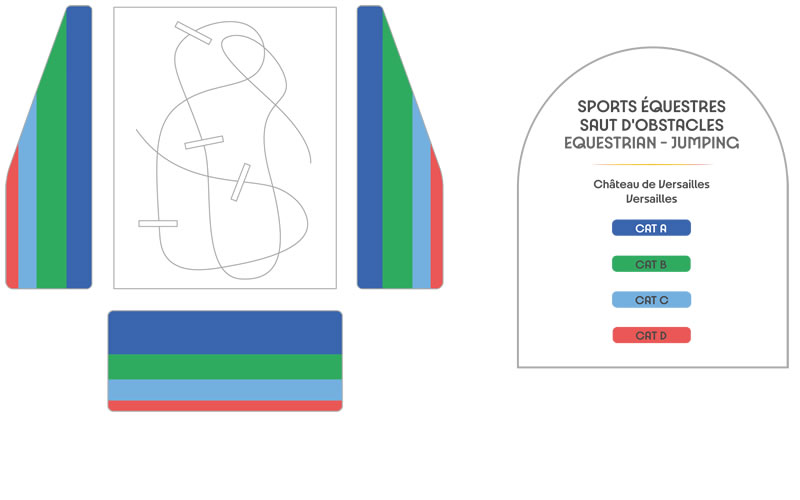EQJ02 Jumping team - Final - Summer Olympics - Paris Olympic 2024 Olympic Equestrian Jumping Tickets

CHÂTEAU DE VERSAILLES - Equestrian Jumping
Olympic Equestrian Jumping
Olympic Equestrian Jumping, also known as show jumping, is one of the three equestrian disciplines featured at the Summer Olympic Games. It is a fast-paced, high-stakes event that tests the precision, agility, and coordination of horse and rider. The objective is to complete a set course of obstacles within a designated time, with the fewest faults possible. Faults are given for knocking down fences, refusing to jump, or exceeding the time allowed.
The course is typically composed of a series of brightly colored fences of varying heights and widths, including verticals, oxers, combinations, and water jumps. Each course is carefully designed to challenge the competitors’ technical skills, decision-making, and the horse’s responsiveness. Riders must memorize the course beforehand and guide their horse through each jump in the correct order, maintaining rhythm and control throughout.
Olympic Jumping is held both as an individual and a team event. In the team competition, national teams of three riders each compete for the highest combined score. The individual competition includes several rounds, with the top riders from qualifying rounds advancing to a final jump-off. In the jump-off, if riders are tied on faults, the winner is decided based on the fastest clear round over a shortened course, adding an element of speed and strategy.
One of the defining features of show jumping is its emphasis on precision. Unlike cross-country or eventing, which may involve rugged terrain and natural obstacles, Olympic Jumping is all about accuracy and finesse. A single rail down can make the difference between gold and no medal, which puts immense pressure on the athletes to perform flawlessly under intense scrutiny.
Equestrian Jumping is unique among Olympic sports in that it features male and female athletes competing equally, and it includes competitors from a wide range of ages. The partnership between horse and rider is central to success; it takes years of training, communication, and trust to reach the Olympic level. The horse is not simply a tool, but an equal partner in the competition.
Overall, Olympic Equestrian Jumping is a thrilling blend of athleticism, elegance, and mental focus. It captivates audiences around the world with its speed, suspense, and the extraordinary harmony between horse and rider.
